Chinese Admit Retreat
by F.Tillman Durdin
Wireless to The New York Times.
Nanking, Monday. Nov.22 ---
Chinese leaders admit their armies are retreating gradually following the loss of Soochow and Changsu. They predict a stubborn stand in strongly prepared new positions.
The new Japanese advance brings the invaders within easy striking distance of the Kiangyin boom obstructing the Yangtze River, so it is expected another boom will be sunk this week in the vicintiy of Tsingkiang, across the river from Kiangyin, in an effort to bar the Japanese fleet from Nanking.
The right flank of the Chinese troops south of Tai Lake is retreating to Wushing and Kwangteh following the loss of Nanzin.
The simultaneous Japanese advance north and south of Tai Laike is increasing apprehensions of the trapping of the huge Chinese force in the Nanking area if the Japanese strike toward Wuhu on the Yangtze River above Nanking, cutting off a Chinese withdrawal upriver.
Breaking of the booms and the arrival of the Japanese fleet off Nanking would complete the encirclement of the Chinese armies and result in a struggle around and in the city, foreign military experts here believe. Many Chinese leaders still demand a stand within the city despite the terrific costs.
The reports of additional Chinese reverses increased the panic of fleeing residents. Thousands packed the Hsiakwan docks. Many destitute men and women wandered about in the bitterly cold driving rain, seeking an opportunity to board steamers, sampans, junks and barges. For half a mile along the Bund are enormous piles of abandoned furniture and baggage which fleeing families left behind.
Warship Guns Removed
The few remaining vessels of the Chinese Navy, including the cruiser Chungshan, are racking their guns. Apparently the intent is to abandon the ships and remove the weapons to land.
The inadequacy of evacuation facilities is shown in semi-official estimates that despite the frantic efforts only 50,000 persons succeeded in escaping from Nanking last week. The capital, which had a population of more than 1,000,000 last July is now estimated to have only 200,000. It is feared that if the Japanese advance continues at its present pace there will be 150,000 civilians here when the battle for possession of the city begins.
The few officals who remain here under orders are extremly(extremely) fearful of theire fate. The United States embassy has already received indirect requests to protect some but all these requests have been politely but firmly rejected.
In an effort to maintain the public utilities a joint headquarters for telephone, water, power and sanitarium services is being established. Four goverment banks are similarly merging their Nanking offices.
The continued concentration of troops here is shown by the increasing number of soldiers within the city. The troops are forcibly occupying many just-vacated civilian residences.
German and other military advisers were among yesterday's fugitives. The Germans will open headquarters at Hankow and plan to carry on their work by training tens of thousands of recruits and conscripts in many interior cities.
Chinese admit a new landing by the Japanese Army in the vicinity of Halchow, the seaboard terminus of the Lunghai railway, and expect rear and flank attacks on their Shantung positions and a possible southward thrust toward Nanking if the Japanese Army can capture the Suchow railway juncition north of Pukow.
United States Ambassador Nelson T.Johnson and most of the embassy staff will leave Nanking tomorrow morning on the gunboat Luzon. This was decided yesterday following a conference of the heads of diplomatic missions which decided that all would depart at approximately the same hour.
The evacuation of the envoys was timed to coincide with the approximate hour of the arrival of Foreign Minister Wang Chung-hui at Hankow, where he will establish a new Foreign Office. He left Nanking yesterday.
The United States Embassy will not be transferred from Nanking. Part of the staff will continue work here just as those remaining at Peiping. The Ambassador explained that his Hankow offices would be opened to maintain contact with the Chinese Government.
Those remaining at the embassy are Georege Atcheson Jr., senior second secretary in charge; J.Hall Paxton, second secretary; and Emile Gassie, clerk. Captain J.M.McHugh, assistant naval attache, will remain a few days.
Accompanying Mr.Johnson will be Willys R. Peck, counsellor; Clayson W. Aldridge, second secretary; Sydney K. Lafoon, vice consul, and Captain Frank M. Roberts, assistant military attache.
A number of Nanking Americans also will depart on the Luzon, which will call at ports en route to Hankow to pick up Americans desiring to flee upriver.
The gunboat Panay will remain at Nanking to serve as a message center for the embassy and perhaps as a refuge for the staff and other Americans remaining here if a battle for the possession of Nanking results in grave danger. About twenty Americans, including the embassy staff but excluding the Panay's crew; an equal number of Britons, a dozen Germans and small groups of other nationalities will remain.
More than 100 Germans, including thirty-two, women, will leave with the German Embassy staff on a leased steamer tomorrow. Dr.G.Rosen, the secretary, will remain.
The Soviet Embassy staff will leave on a French gunboat. All will go, including the Tass news agency representatives, cutting off all Soviet offical representation in Nanking.
-----
Plan Yellow River Crossing
PEIPING, Monday, Nov.22(AP). -- The Japanese Army is said to be preparing to cross the Yellow River on a thirty-mile front and attack the region around Tsinan, the capital of Shantung Province. The Japanese are within five miles of Tsinan in some sectors. Their batleline extends south from Tsiyang on the Yellow River.
The army spokesman said Japanese soldiers had captured Lintsing, important city on the Grand Canal sixty miles northwest of Tsinan near the Hopeh-Shantung border. He reported the retreating Chinese had destroyed nearly a third of the half-mile-long bridge over the canal.
 K氏提供によります。心から感謝申し上げます。http://kuidaore.hatenadiary.com/
K氏提供によります。心から感謝申し上げます。http://kuidaore.hatenadiary.com/
支那は退陣を認める。
F・ティルマン・ダーディン
ニューヨーク・タイムズ 無線
11月22日 月曜日 南京より
支那人リーダーは支那軍が蘇州(Soochow)や長州(Changsu)を徐々に失い続けて撤退し続けていることを認める。彼等は切実に準備された新しい場所での頑強な抵抗を見通す。
日本側に新たな前進があると、揚子江を遮断するよう造られた江陰(Kiangyin, Jiangyin)の妨害物では、その侵入者への有効な攻撃は簡単なものに限られてしまうので、日本軍艦隊を南京に近づけないよう、江陰から川を横切るTsingkiang(黄山)周辺に今週また別の遮蔽物沈められると思われる。太湖(Tai Lake)南の右展開の支那軍は南浔(Nanzin)の損失に続き呉興(Wushing)と桃州(Kwangteh)に後退している。
日本人が南京の上の揚子江の蕪湖(Wuhu)に向かって進撃し、支那人の川上への撤退を止めれば、日本人の太湖の北と南を同時進行は南京地域の巨大な支那軍をわなに追い込むことで憂慮を増やしている。障害物の破壊と南京沖の日本艦隊の到着は支那軍の包囲を完了させ、都市周辺での戦闘に繋がると外国人軍事専門家はここで信じている。多くの支那人指導者はまだ凄まじいコストにもかかわらず街でのその立場を要求している。
支那人転落の追加の報告は脱出する住民のパニックを増大させた。何千人もの人々が下関(Hsiakwan)港で詰め込まれた。酷く冷たい降りしきる雨の中を徘徊していた多くの貧しい男女は、蒸気船やサンパン(sampan:中国・東南アジアの河川や沿岸で使う小型木造の平底船)、平底船(junk:ジャンク(中国の平底帆船))や艀(barge:はしけ舟)に乗り込む機会を探している。外灘沿いの半マイルのところには、放棄された家具や手荷物の膨大な山が残っています。
軍艦 銃器 取り外される
数隻の残っている中国海軍の艦船は、永豊(注1Chungshan or SS Zhongshan:砲艦:1938年10月24日 武漢攻略戦の際、日本軍の爆撃機6機の攻撃を受け撃沈される。三菱造船長崎造船所の造船)も含む、はそれらの火器は激しく損傷している。見たところは船を放棄して陸へ武器を取り外すつもりのようだ。撤退施設の不十分さにより先週、南京からの逃避に成功した人間は必死の努力にもかかわらず5万人だけであったという半公式的な見積もりが示されている。首都は昨年7月に人口が100万人以上であったものが今や20万人に過ぎないと推定されています。もし日本軍の進出が現状のペースで続くならば街の占領の為の戦闘が始まった時ここには15万人の民間人がいる恐れがある。
命令によりここに残った数人の将校は、彼等の非運を非常に恐れている。米国外交官は既に一部を保護する要請を間接的に受けているがそれらの全ての要請は丁寧に且つ堅く断った。公共施設を維持するための努力として、電話、水道、電力、衛生設備の共同司令部が設置されている。4つの政府系銀行も同じように南京のオフィスを一緒にしている。ここでの軍隊の継続的な集結は、都市内の兵士の増加によって示されている。その軍団は、退去した多くの民間住宅を強制的に占領している。
ドイツ人と他の軍事顧問は昨日の逃亡者の中に居た。そのドイツ人たちは漢口(Hankow, Hankou)で本部を開くつもりで、何万もの新兵を訓練する仕事を延長する計画しており、多くの都市の中で徴兵されています。
支那人は隴海鉄道路線(Lunghai railway)の海岸の終着地である杭州(Halchow? Hangzhou)付近で日本軍のいくつかの上陸を認めた。日本軍は蘇州鉄道の浦口北のジャンクションを攻略することが出来るならば、彼等の山東省(Shantung)での後方と側面攻撃と南京に向かう南への可能性とが待ち受ける。
米国大使ネルソン・T・ジョンソンと大使館職員の大半は明日砲艦ルソン(注2:gunboat Luzon)で南京を去るだろう。これは昨日、凡そ同じ時間に全てが出港することを決めた代表部の会議のとおり決められていた。
特使の避難は、外交部長の王寵恵(Wang Chung-hui)の漢口到着時とおおよそ一致するように調整されており、そこで新しい外務省が立ち上げられる。彼は昨日南京を立った。
米国大使館は、南京から移転しないだろう。残ったスタッフは北京(Peiping)に残っているものと同じようにここで仕事を続けるだろう。大使は漢口の事務所は支那政府と接触を維持する為に開かれたと説明した。
大使館に残っているものは上級第二事務局長ジョージ・アチソン・ジュニア、第二秘書J・ハル・パクストン、事務員エミール・ギャッシです。大使館随行員のJ・M・マクホグ艦長は数日間残っているだろう。
ジョンソン大使に同行するのは、カウンセラーのウィリィ・R・ペック氏、第二秘書のクライソン・W・アルドリッジ、通訳シンディ・K・ラフーン、大使館随行員の艦長のフランク・M・ロバーツである。
南京のアメリカン人の多くは、砲艦ルソン号で出発し、そして漢口への途中で川上に逃げたいアメリカ人を乗せるように呼び出されるだろう。
砲艦パネイ号は、外交官の為のメッセイジセンターや南京の占領のための戦いが重大な危険につながるならばおそらくスタッフとここに残る他のアメリカ人の避難先として南京に残るだろう。おおよそ20名のアメリカ人たち、外務省スタッフも含みパネイ号の乗船員を除く;同数の英国人、1ダース(12名)のドイツ人と他の少数の外国人のグループが残るだろう。明日、32名の女性を含む100名以上のドイツ人が借りた蒸気船でドイツ人外交官職員と供に退去するだろう。大使館事務員のG・ローゼンは残るだろう。
ソビエト大使館職員はフランスの砲艦で退去するようだ。タス通信の代表を含む、南京での全てのソビエトの公的代表者が接続を断って全ての者が行くだろう。
黄河を横断する計画
11月22日月曜日 AP通信:北京より
日本軍は30マイル前の黄河を渡り、山東省の首都である済南(Tsinan, Jinan)のまわりの領域を攻撃すると準備をして言っている。彼等の前線は黄河の太阳(Tsiyang, Taiyang)から南に拡張している。
その軍のスポークスマンは日本兵は湖北省(Hopeh-Shantung, Hubei, Húběi Shěng)の国境の近くの済南(Tsinan, Jinan)の60マイルの北西の大運河の重要な都市の臨清(Lintsing, Linqing, 临清)を落としたと言った。彼は後退している中国人が運河を渡る半マイルの長い橋のほぼ3分の1を破壊したと報告した。
済南(Tsinan, Jinan)
太阳(Tsiyang, Taiyang)
臨清(Lintsing, Linqing, 临清)
湖北省(Hopeh-Shantung, Hubei, Húběi Shěng)
蘇州鉄道(Suchow railway)
浦口(Pukou)
山東省(Shantung, Shandong)
(注1)永豊 (砲艦) https://ja.wikipedia.org/wiki/%E6%B0%B8%E8%B1%8A_(%E7%A0%B2%E8%89%A6) & https://en.wikipedia.org/wiki/SS_Zhongshan
(注2)砲艦ルソン(gunboat Luzon)後に1942年に日本に接収され、砲艦唐津となる。https://ja.wikipedia.org/wiki/%E5%94%90%E6%B4%A5_(%E7%A0%B2%E8%89%A6)
The Tianjin–Pukou or Jinpu Railway (simplified Chinese: 津浦铁路; traditional Chinese: 津浦鐵路; pinyin: Jīnpǔ Tiělù) runs from Tianjin to Pukou outside Nanjing in Jiangsu province.
黄山(Tsingkiang, Huangshan)の位置は、
https://books.google.co.jp/books?id=Ky6sAAAAIAAJ&pg=PA34&lpg=PA34&dq=Tsingkiang+Yangtze+River&source=bl&ots=wFaWm5rdH1&sig=2QaK7ao24Vl-xnVceqPCJNV0_oE&hl=ja&sa=X&ved=0ahUKEwif2Mnq4IfTAhUBerwKHY64DagQ6AEIMjAD#v=onepage&q=Tsingkiang%20Yangtze%20River&f=false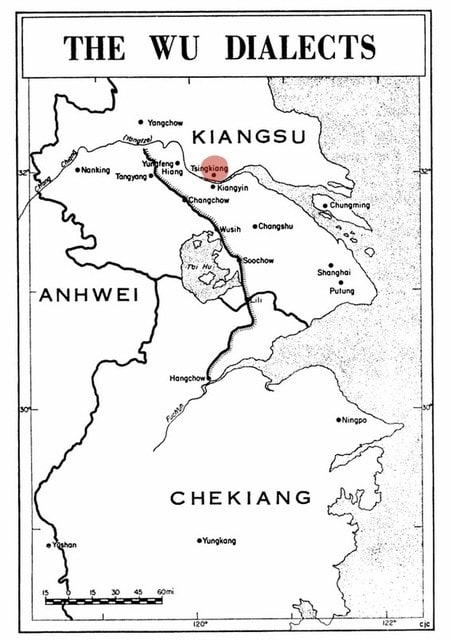











![英語版Wikiの[Nanjing massacre]のレイプの被害者数は、[2万人]と[8万人]という数字について](https://blogimg.goo.ne.jp/image/upload/f_auto,q_auto,t_image_square_m/v1/user_image/3e/bf/4e958b0df4dae2efaae311bc7490fe2e.png)
![英語版Wikiの[Nanjing massacre]のレイプの被害者数は、[2万人]と[8万人]という数字について](https://blogimg.goo.ne.jp/image/upload/f_auto,q_auto,t_image_square_m/v1/user_image/59/3e/ee4f6f211c5fcfde5f98514db31e6345.png)
![英語版Wikiの[Nanjing massacre]のレイプの被害者数は、[2万人]と[8万人]という数字について](https://blogimg.goo.ne.jp/image/upload/f_auto,q_auto,t_image_square_m/v1/user_image/60/db/dbf0c4de83642bebaa9db2fe1ec7791f.png)
![英語版Wikiの[Nanjing massacre]のレイプの被害者数は、[2万人]と[8万人]という数字について](https://blogimg.goo.ne.jp/image/upload/f_auto,q_auto,t_image_square_m/v1/user_image/57/aa/4b6f78386db8398965d5ab7d3cf8c31d.jpg)
![英語版Wikiの[Nanjing massacre]のレイプの被害者数は、[2万人]と[8万人]という数字について](https://blogimg.goo.ne.jp/image/upload/f_auto,q_auto,t_image_square_m/v1/user_image/1b/8f/275e903ac5a3597f90f2780b38ec6818.png)
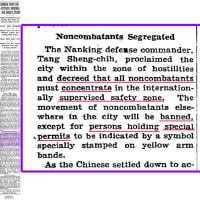
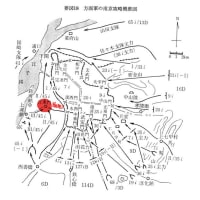
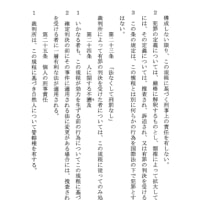
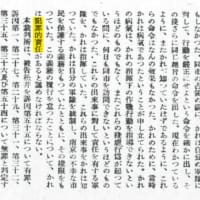
※コメント投稿者のブログIDはブログ作成者のみに通知されます